Gray-Scott Model at F 0.0100, k 0.0410
These images and movie demonstrate the behavior of the Gray-Scott reaction-diffusion system with σ=Du/Dv=2 and parameters F=0.0100, k=0.0410.
Most starting patterns produce one or more smooth radial waves, these then usually annihilate cleanly when they contact each other. However, as seen here (at 3 seconds into the movie) a second generation of waves can be created by the first annihilation.
Sustained spirals are also viable. Here, we inject a pair of partial wavefronts (at 20 seconds into the movie). These create two pairs of spiral seeds, which make a long-lasting spiral phenomenon resembling the classic Petri dish B-Z (Belousov-Zhabotinsky) reaction.
By about 1 minute 10 seconds into the movie, the two pairs of spiral seeds have merged into one pair of double-spiral seeds, which form a mirror-image pair due to the initial seed pattern of two parallel wavefronts. The wavefronts seen here are smoother than those to the immediate west.
Categories: Munafo ξ; Wolfram 3 (glossary of terms)
 increase F increase F
 | |||
 decrease k  |
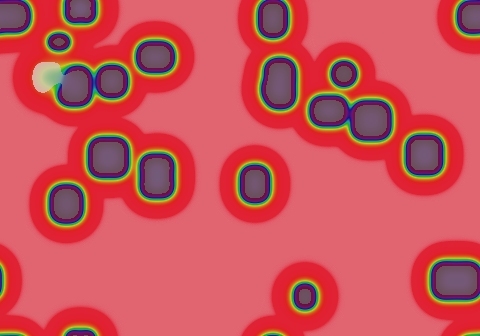
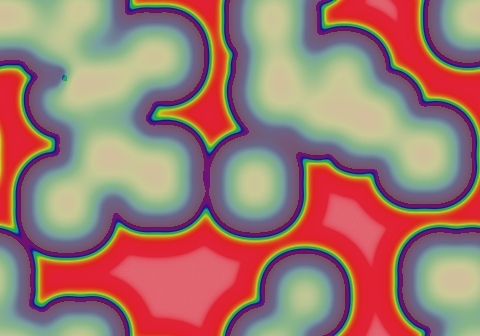
|
15 frames/sec.; each fr. is 22 iter. steps = 11 tu; 1801 fr. total (19,811 tu) |  increase k 
|
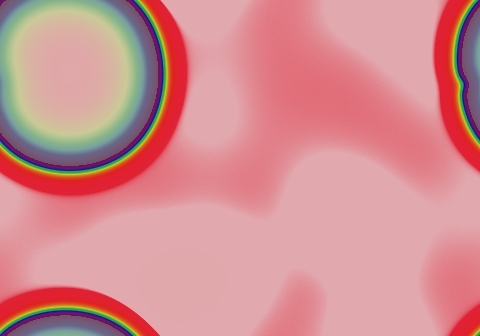
|
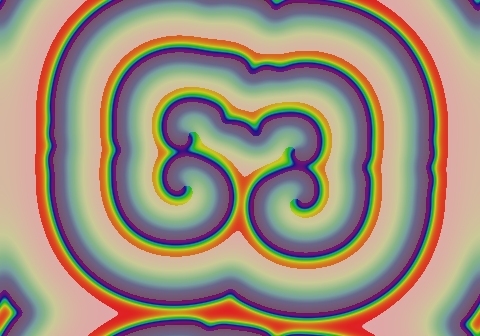
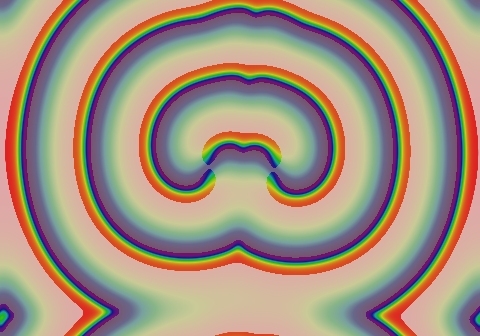
| ||
 decrease F decrease F
 |
In these images:
- Color indicates level of u, ranging from purple (lowest u values) through blue, aqua, green, yellow and pink/red (highest u values)
- Areas where u is increasing are lightened to a light pastel tone; where u is decreasing the color is vivid.
- In areas where u is changing by less than ±3×10-6 per tu, an intermediate pastel color is seen. This includes areas that are in steady state or equilibrium.
''tu'' is the dimensionless unit of time, and ''lu'' the dimensionless unit of length, implicit in the equations that define the reaction-diffusion model. The grids for these simulations use Δx=1/143 lu and Δt=1/2 tu; the system is 3.2 lu wide. The simulation meets itself at the edges (periodic boundary condition); all images tile seamlessly if used as wallpaper.
Go back to Gray-Scott pattern index
This page was written in the "embarrassingly readable" markup language RHTF, and was last updated on 2019 Jan 05.
 s.11
s.11